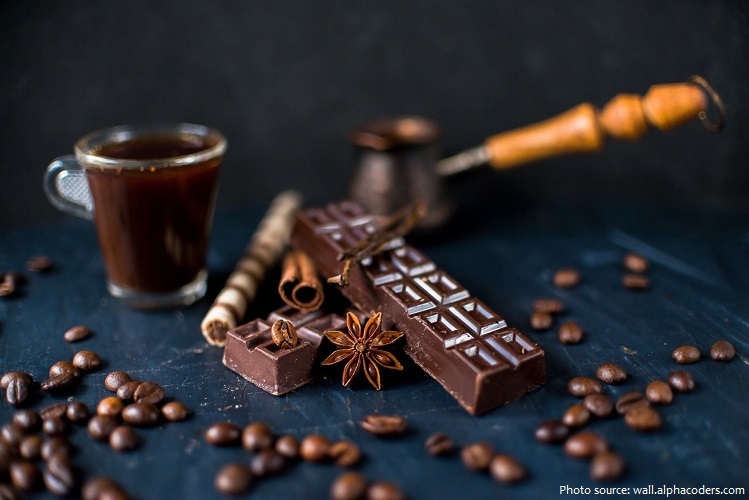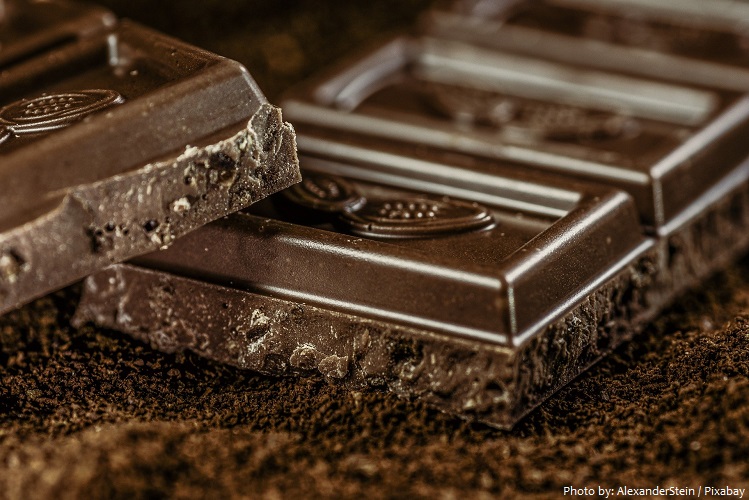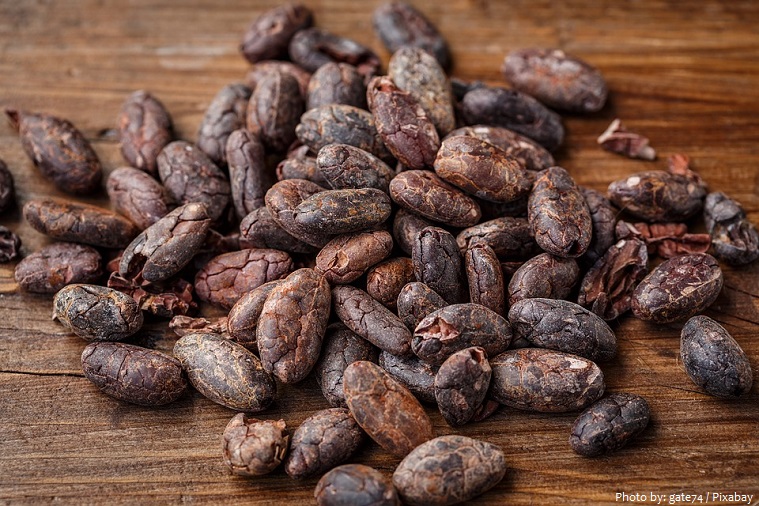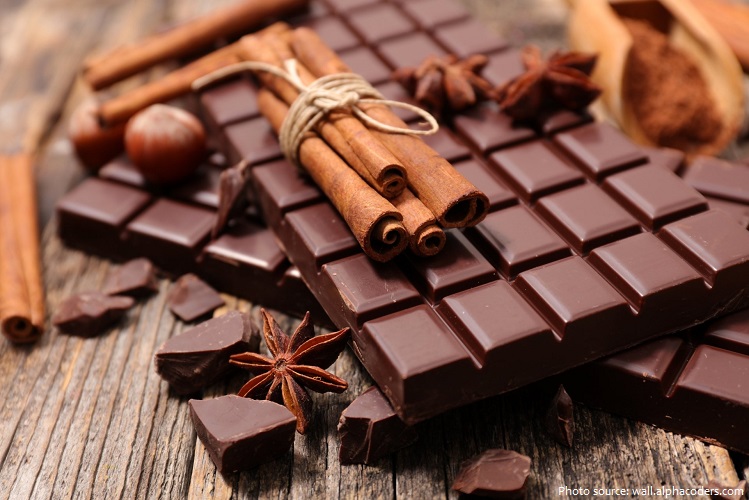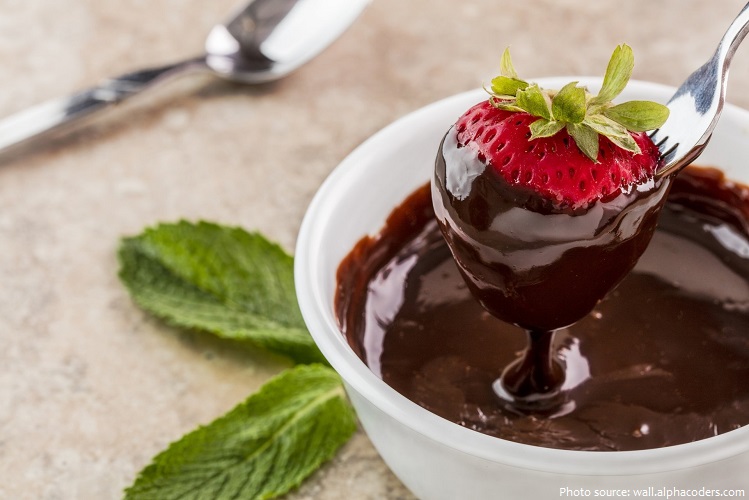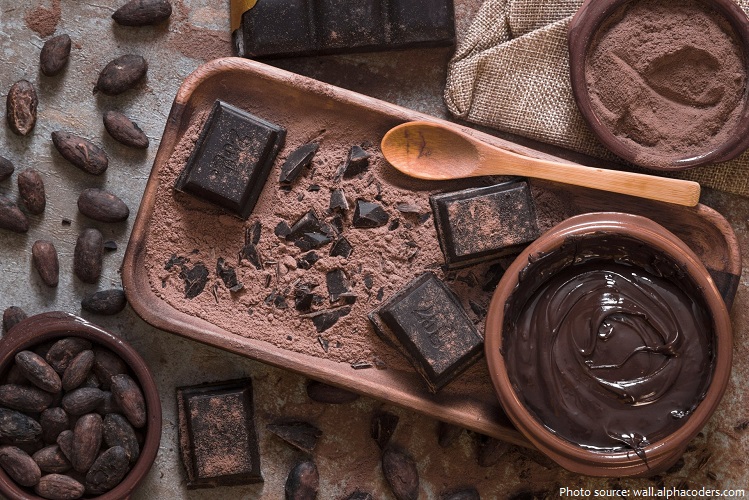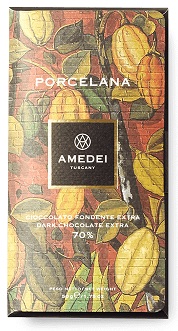Dark chocolate is a form of chocolate containing cocoa solids, cocoa butter.
It is also known as dark black chocolate, black chocolate, plain chocolate, or sour chocolate.
Dark chocolate of chocolate is made without the milk and sugar found in milk chocolate.
This kind of chocolat usually contain high cocoa percentages from 70% to 100%.
The higher percentage of cocoa solids, the higher the caffeine content. 2 ounces (60 grams) of 70% dark chocolate contains about 50-60 mg caffeine. In comparison, a 8-ounce (0.24 liter) cup of coffee contains 100-200 milligrams of caffeine.
Dark chocolate has been around for over 3,000 years.
It was developed around 1900 BC in Central and South America as a drink.
Dark chocolate was the only form of chocolate that was available at the time.
Later, it was also made into a drink for the Aztecs and Mayans for ceremonial and medicinal purposes.
Due to the bitterness of pure dark chocolate, it was modified over the years to become more than just dark chocolate.
The Spanish discovered chocolate in the early 1500s and brought it back to Europe – they would add honey and cane sugar to make it sweeter and this paved the road to the creation of milk chocolate.
The word “chocolate” is derived from the Spanish word chocolate, deriving in turn from the Classical Nahuatl word xocolātl.
Chocolate is made from the tropical Theobroma cacao tree seeds.
The seeds of the cacao tree have an intense bitter taste and must be fermented to develop the flavor. After fermentation, the beans are dried, cleaned, and roasted. The shell is removed to produce cacao nibs, which are then ground to cocoa mass, unadulterated chocolate in rough form. Once the cocoa mass is liquefied by heating, it is called chocolate liquor.
The U.S. Food and Drug Administration calls dark chocolate – “sweet chocolate”, and requires a 15% concentration of chocolate liquor.
European rules specify a minimum of 35% cocoa solids.
A higher amount of cocoa solids indicates more bitterness.
Semisweet chocolate is a dark chocolate with a low sugar content.
Bittersweet chocolate is chocolate liquor to which some sugar, more cocoa butter and vanilla are added. It has less sugar and more liquor than semisweet chocolate.
Couverture chocolate is a high-quality class of chocolate, containing a high percentage of cocoa solids that includes a higher percentage of cocoa butter than other chocolate, and precisely tempered. Couverture chocolate is used by professionals for dipping, coating, molding and garnishing (‘couverture’ means ‘covering’ in French). Popular brands of couverture chocolate used by pastry chefs include: Valrhona, Lindt & Sprüngli, Scharffen Berger, Callebaut, and Guittard.
Baking chocolate, also referred to as bitter chocolate, cooking chocolate and unsweetened chocolate, is a type of dark chocolate that is prepared for use as an ingredient in baking. Modern manufactured baking chocolate is typically formed from chocolate liquor formed into bars or chocolate chips. Baking chocolate may be of a lower quality compared to other types of chocolate, and may have part of the cocoa butter replaced with other fats that do not require tempering.
Amedei Porcelana, a dark chocolate made by the Amedei chocolatier of Tuscany, Italy, is often called the world’s most expensive chocolate. It has won various awards from the “Academy of Chocolate”, including “Best bean to bar”, “Best Dark Chocolate Bar”, and the “Golden Bean award.” A 1.8 oz bar sells in the United States for $18.99. The often-quoted price of this chocolate is $90 a pound. While Amedei Porcelana has often been called the world’s most expensive chocolate, sources such as Forbes magazine give examples of chocolates that sell for as much or more, although these examples refer more to chocolate in praline form or with the addition of pure gold to the packaging, while the assertion about Amedei Porcelana should be interpreted more as the cost of a pure chocolate bar or that of original cocoa beans, without taking into consideration any special packaging or manufacturing extra cost.
Dark chocolate does have some impressive health benefits as it is naturally high in iron, magnesium, copper and manganese. It also contains antioxidants called flavonoids which help your body function more efficiently while protecting it against everyday toxins and stressors.
Store in a cool dry area (18-21°C / 65-70°F) in a tightly sealed container. If stored properly, dark chocolate will last up to two years.

